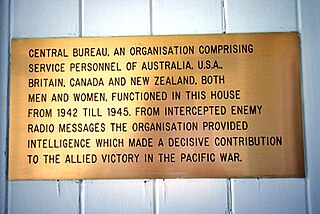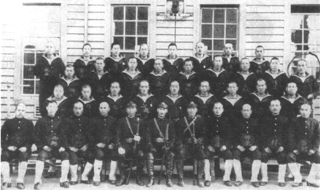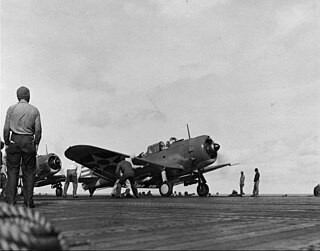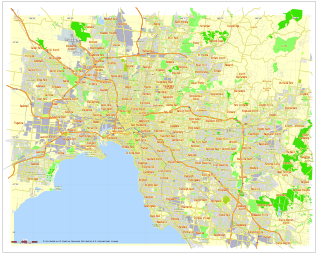Related Research Articles

Joseph John Rochefort was an American naval officer and cryptanalyst. He was a major figure in the United States Navy's cryptographic and intelligence operations from 1925 to 1946, particularly in the Battle of Midway. His contributions and those of his team were pivotal to victory in the Pacific War.

The Battle of the Java Sea was a decisive naval battle of the Pacific campaign of World War II.
Cryptography was used extensively during World War II because of the importance of radio communication and the ease of radio interception. The nations involved fielded a plethora of code and cipher systems, many of the latter using rotor machines. As a result, the theoretical and practical aspects of cryptanalysis, or codebreaking, were much advanced.
OP-20-G or "Office of Chief Of Naval Operations (OPNAV), 20th Division of the Office of Naval Communications, G Section / Communications Security", was the U.S. Navy's signals intelligence and cryptanalysis group during World War II. Its mission was to intercept, decrypt, and analyze naval communications from Japanese, German, and Italian navies. In addition OP-20-G also copied diplomatic messages of many foreign governments. The majority of the section's effort was directed towards Japan and included breaking the early Japanese "Blue" book fleet code. This was made possible by intercept and High Frequency Direction Finder (HFDF) sites in the Pacific, Atlantic, and continental U.S., as well as a Japanese telegraphic code school for radio operators in Washington, D.C.
Station HYPO, also known as Fleet Radio Unit Pacific (FRUPAC), was the United States Navy signals monitoring and cryptographic intelligence unit in Hawaii during World War II. It was one of two major Allied signals intelligence units, called Fleet Radio Units in the Pacific theaters, along with FRUMEL in Melbourne, Australia. The station took its initial name from the phonetic code at the time for "H" for Heʻeia, Hawaii radio tower. The precise importance and role of HYPO in penetrating the Japanese naval codes has been the subject of considerable controversy, reflecting internal tensions amongst US Navy cryptographic stations.
Station CAST was the United States Navy signals monitoring and cryptographic intelligence fleet radio unit at Cavite Navy Yard in the Philippines, until Cavite was captured by the Japanese forces in 1942, during World War II. It was an important part of the Allied intelligence effort, addressing Japanese communications as the War expanded from China into the rest of the Pacific theaters. As Japanese advances in the Philippines threatened CAST, its staff and services were progressively transferred to Corregidor in Manila Bay, and eventually to a newly formed US-Australian station, FRUMEL in Melbourne, Australia.

The Central Bureau was one of two Allied signals intelligence (SIGINT) organisations in the South West Pacific area (SWPA) during World War II. Central Bureau was attached to the headquarters of the Supreme Commander, Southwest Pacific Area, General Douglas MacArthur. The role of the Bureau was to research and decrypt intercepted Imperial Japanese Army traffic and work in close co-operation with other SIGINT centers in the United States, United Kingdom and India. Air activities included both army and navy air forces, as there was no independent Japanese air force.

The invasion of Tulagi, on 3–4 May 1942, was part of Operation Mo, the Empire of Japan's strategy in the South Pacific and South West Pacific Area in 1942. The plan called for Imperial Japanese Navy troops to capture Tulagi and nearby islands in the British Solomon Islands Protectorate. The occupation of Tulagi by the Japanese was intended to cover the flank of and provide reconnaissance support for Japanese forces that were advancing on Port Moresby in New Guinea, provide greater defensive depth for the major Japanese base at Rabaul, and serve as a base for Japanese forces to threaten and interdict the supply and communication routes between the United States and Australia and New Zealand.

The South West Pacific theatre, during World War II, was a major theatre of the war between the Allies and the Axis. It included the Philippines, the Dutch East Indies, Borneo, Australia and its mandate Territory of New Guinea and the western part of the Solomon Islands. This area was defined by the Allied powers' South West Pacific Area (SWPA) command.

Fleet Radio Unit, Melbourne (FRUMEL) was a United States–Australian–British signals intelligence unit, founded in Melbourne, Australia, during World War II. It was one of two major Allied signals intelligence units called Fleet Radio Units in the Pacific theatre, the other being FRUPAC, in Hawaii. FRUMEL was a U.S. Navy organization, reporting directly to CINCPAC in Hawaii and the Chief of Naval Operations in Washington, D.C., and hence to the central cryptographic organization. The separate Central Bureau in Melbourne was attached and reported to General Douglas MacArthur's Allied South West Pacific Area command headquarters.
Before the development of radar and other electronics techniques, signals intelligence (SIGINT) and communications intelligence (COMINT) were essentially synonymous. Sir Francis Walsingham ran a postal interception bureau with some cryptanalytic capability during the reign of Elizabeth I, but the technology was only slightly less advanced than men with shotguns, during World War I, who jammed pigeon post communications and intercepted the messages carried.

The Marshalls–Gilberts raids were tactical airstrikes and naval artillery attacks by United States Navy aircraft carrier and other warship forces against Imperial Japanese Navy (IJN) garrisons in the Marshall and Gilbert Islands on 1 February 1942. It was the first of six American raids against Japanese-held territories conducted in the first half of 1942 as part of a strategy.
I-13 was an Imperial Japanese Navy Type A Mod.2 submarine that served during World War II. Designed as a submarine aircraft carrier, she was commissioned in December 1944 and sunk in July 1945.

Operation Kita was conducted by the Imperial Japanese Navy (IJN) during the Pacific War in February 1945. Its purpose was to return two Ise-class hybrid battleship-aircraft carriers and four escort ships to Japan from Singapore, where they had been based since November the previous year. The movement of the Japanese force was detected by the Allies, but all attempts to attack it with submarines and aircraft failed. Nevertheless, as a result of the intensifying Allied blockade of Japan, the Ise-class battleship-carriers and their escorts were among the last IJN warships to safely reach the country from the Southwest Pacific before the end of the war.
I-372 was an Imperial Japanese Navy Type D1 transport submarine. Completed and commissioned in November 1944, she served in World War II and was sunk in July 1945.
Ro-35 was an Imperial Japanese Navy Kaichū type submarine, the lead unit of the K6 sub-class. Completed and commissioned in March 1943, she served in World War II and was sunk during her first war patrol in August 1943.
Ro-37 was an Imperial Japanese Navy Kaichū type submarine of the K6 sub-class. Completed and commissioned in June 1943, she served in World War II and was sunk during her second war patrol in January 1944.
Ro-115 was an Imperial Japanese Navy Ro-100-class submarine. Completed and commissioned in November 1943, she served in World War II, operating in the central Pacific Ocean, the New Guinea campaign, the Indian Ocean, and off the Philippine Islands. She was sunk in February 1945 during her fifth war patrol.

Naval Base Melbourne was a United States Navy base at Melbourne during World War II. Naval Base Melbourne became the South West Pacific Area Command Headquarters after the 1941 invasion of the Philippines. General Douglas MacArthur, after escaping the Philippines, set up his Headquarters after his arrival on 21 March 1942. MacArthur was appointed Supreme Commander of all Allied Forces in the South West Pacific Area. The US Navy also set up a Headquarters a Melbourne, Allied Naval Forces Southwest Pacific Area under Commander Vice Admiral Herbert F. Leary. MacArthur and Leary used the empty Trustees Executive building at 401 Collins Street, Melbourne for headquarters. The Port of Melbourne had good fleet anchorage and docks. A new naval base was built at Brisbane, Australia, Naval Base Brisbane, and the Headquarters was moved to Brisbane in July 1942.

U.S. Naval Base Australia comprised several United States Navy bases in Australia during World War II. Australia entered World War II on 3 September 1939, being a self-governing nation within the British Empire. The United States formally entered the war on 7 December 1941 after the Japanese attack on Pearl Harbor. Following this attack Japanese forces quickly took over much of the western and central Pacific Ocean. The United States lost key naval bases including Naval Base Manila and Naval Base Subic Bay as a result of the 1941 Japanese invasion of the Philippines, along with Guam and Wake Island. The Allied forces needed new bases in the South West Pacific to stage attacks on Japan's southern empire, and these were built in Australia.
References
- Holmes, W. J. (1979). Double-edged Secrets: U.S. Naval Intelligence Operations in the Pacific During World War II. Annapolis, Maryland: Blue Jacket Books/Naval Institute Press. ISBN 1-55750-324-9.
- Parker, Frederick D. "A Priceless Advantage: U.S. Navy Communications Intelligence and the Battles of Coral Sea, Midway, and the Aleutians". National Security Agency, Central Security Service. Retrieved November 20, 2006.
- Prados, John (1995). Combined Fleet Decoded: The Secret History of American Intelligence and the Japanese Navy in World War II. New York: Random House. ISBN 0-679-43701-0.
- Smith, Michael (2000). The Emperor's Codes: Bletchley Park and the Breaking of Japan's Secret Ciphers. London: Bantam Press. ISBN 9780553813203.
- Willmott, H. P. (1983). The Barrier and the Javelin: Japanese and Allied Pacific Strategies February to June 1942 . Annapolis, Maryland: Naval Institute Press. ISBN 0-87021-535-3.